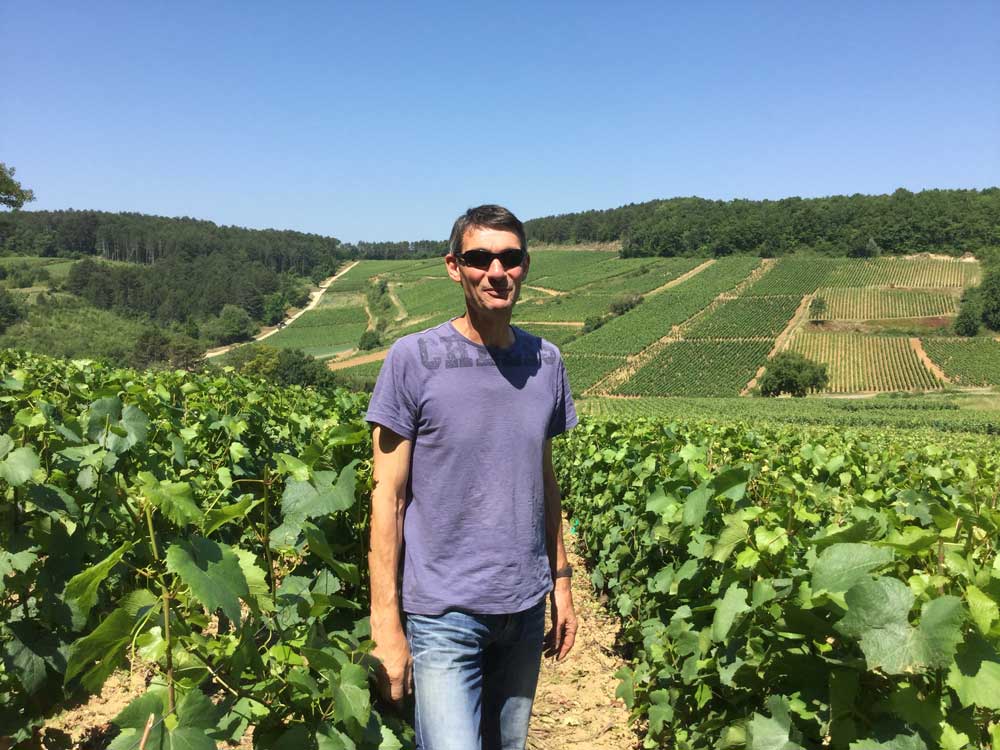Producer: Domaine Denis Pere & Fils
Wine: Cremant de Bourgogne Brut Non Vintage
Varietals: 60% Pinot Noir, 30% Chardonnay, 10% Aligote
Tasting Notes: This sparkling wine dazzles with a cascade of fine, plentiful bubbles, shimmering in a golden yellow hue with subtle green highlights. On the nose, it reveals a complex bouquet of red fruits, freshly baked brioche, beeswax, and zesty key lime, layered with delicate floral and mineral undertones. The palate is crisp and vibrant, marked by a bright acidity that carries a medium-bodied, refreshing finish.
Food: Pairs beautifully with a variety of dishes, thanks to its crisp acidity and fresh fruit notes. It complements soft cheeses like baked brie and goat cheese, enhances the flavors of seafood such as oysters, caviar and shrimp, and balances the richness of light charcuterie or fried foods like crispy chicken. Its bright, refreshing profile also works wonderfully with festive hors d’œuvres.
Cellaring: Drink now
DOMAINE DENIS PERE & FILS
Pernand-Vergelesses, Burgundy

Domaine Denis Pere & Fils is located in Pernand-Vergelesses, a picturesque village in Côte de Beaune and covers 31 acres of vines in Pernand-Vergelesses, Savigny-lès-Beaune, Aloxe-Corton and Chorey-lès-Beaune. In 1940, Raoul Denis, who was the winemaker of the prestigious Hospices de Beaune (as his father and grandfather had been) decided to take over a secondary job with his wife and to cultivate the 5 acres of vines he inherited from his family. In 1972, they created the company Denis Père & Fils with their first son, Roland and his wife, Annick.
In 1992, Roland handed the torch to Christophe, the youngest of his sons. Today, the domaine is run by Christophe and his wife Valérie.
The Vine Cultivation is traditional and balanced. Christophe Denis thinks this choice of methods is a good alternative between the “all chemical” and “organic” approaches. It is based on their experience and observation of the vines and the local conditions, allowing them to calculate accurately the optimum usage of organic fertilizers, to reduce to a minimum the application of synthetic products in the fight against pests (mildew, odium, grape-worm) and to best preserve the vineyard’s balance by the working of the soil (plowing or grassing).




Sparkling Bourgogne made its entrance into history in 1830 when it was lauded by the poet Alfred de Musset (1820-1857) in his “Secrètes pensées de Raphaël”. It was first made at the beginning of the 19th century at Chablis, Nuits-Saint-Georges, Rully and Tonnerre, and since then has not ceased to sparkle. It was for a long time the practice of making effervescent versions of prestigious Burgundian Grands Crus but the AOC status granted in 1975 laid down strict conditions for its production on the basis of meticulously-applied traditional skills to achieve high-quality vinification. Only whites and rosés qualify for the appellation. They may be blanc de blancs (from white grapes) or blanc de noirs (from white-juiced black grapes). Most are classed as brut or, less often, demi-sec. The production area is the same as that for the appellation Bourgogne.
Information by: Burgundy Wines

